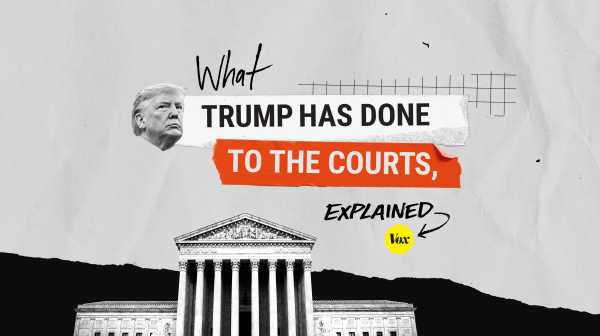
What Trump has done to the courts, explained
No president in recent memory has done more to change the judiciary than Donald Trump.
By
Ian Millhiser
Updated
Dec 19, 2019, 9:59pm EST
Share this story
-
Share this on Facebook
-
Share this on Twitter
-
Share
All sharing options
Share
All sharing options for:
What Trump has done to the courts, explained
-
Reddit
-
Pocket
-
Flipboard
-
Email
In less than three years as president, President Trump has done nearly as much to shape the courts as President Obama did in eight years.
Trump hasn’t simply given lots of lifetime appointments to lots of lawyers. He’s filled the bench with some of the smartest, and some of the most ideologically reliable, men and women to be found in the conservative movement. Long after Trump leaves office, these judges will shape American law — pushing it further and further to the right even if the voters soundly reject Trumpism in 2020.
Let’s start with some raw numbers. Both Obama and Trump appointed two justices to the Supreme Court but Trump’s impact on the highest Court far exceeds Obama’s, because Trump replaced the relatively moderate conservative Justice Anthony Kennedy with the hardline conservative Brett Kavanaugh (that was after appointing conservative Neil Gorsuch to fill Antonin Scalia’s vacant seat). Obama’s appointees — Sonia Sotomayor and Elena Kagan — largely maintained the balance of power on a conservative Court, while Trump has shoved that Court even further to the right.
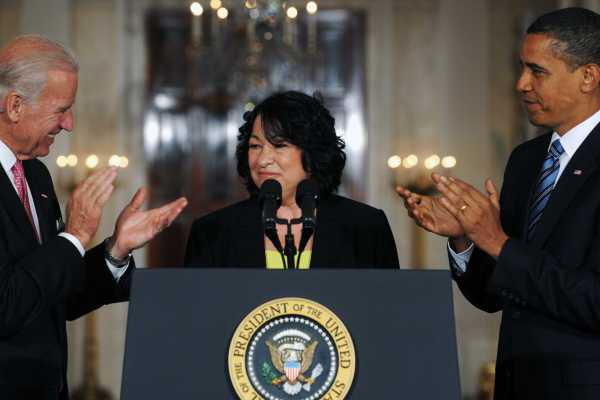
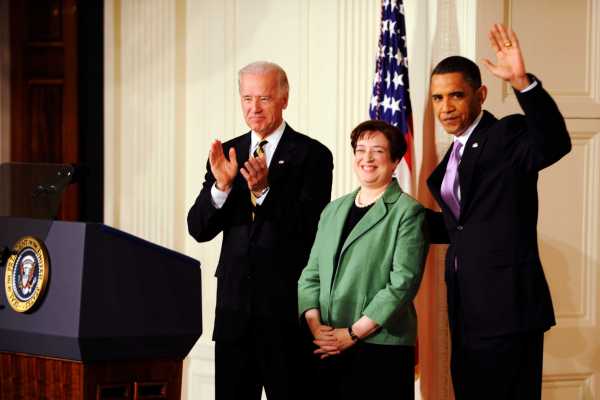
On the courts of appeal, the final word in the overwhelming majority of federal cases, more than one-quarter of active judges are Trump appointees. In less than three years, Trump has named a total of 48 judges to these courts — compared to the 55 Obama appointed during his entire presidency.
At this point in the Obama presidency, Obama had appointed only 24 court of appeals judges, meaning that Trump is appointing appellate judges twice as fast as Obama. At a similar point in their presidencies, President George W. Bush had filled only 30 seats on the federal appellate bench; President Clinton, 27; President George H.W. Bush, 31; and President Reagan, 23.
On the district courts, the lowest level of federal courts, Trump’s impact has been less significant. Obama appointed 268 federal trial judges in eight years, while Trump’s only appointed 112 so far. But district judges deal far more often with routine matters like individual criminal sentences and trial schedules, and far less often with the kind of blockbuster cases that shape thousands of lives. As Justice Sonia Sotomayor said in a candid moment while she was still a lower court judge, “the court of appeals is where policy is made.”
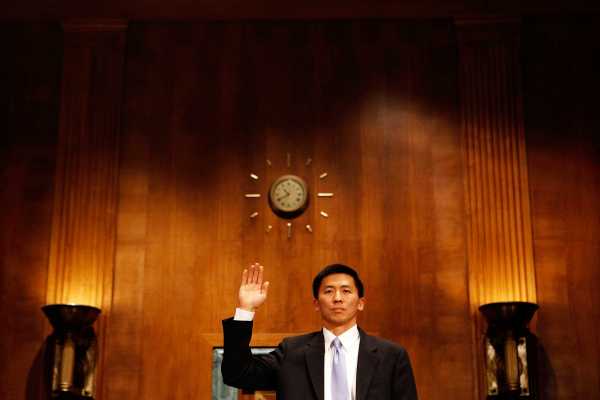
It’s tempting to assume that Trump’s judicial appointees share the goonish incompetence of the man who placed them on the bench, but this assumption could not be more wrong. His picks include leading academics, Supreme Court litigators, and already prominent judges who now enjoy even more power within the judiciary.
Before he became president, Trump promised to delegate the judicial selection process to the Federalist Society, a powerful group of conservative lawyers that counts at least four Supreme Court justices among its members. “We’re going to have great judges, conservative, all picked by the Federalist Society,” Trump told a radio show hosted by the right-wing site Breitbart while he was still a candidate.
The Federalist Society spent decades preparing for this moment, and they’ve helped Trump identify many of the most talented conservative stalwarts in the entire legal profession to place on the bench.
There’s no completely objective way to measure legal ability, but a common metric used by legal employers to identify the most gifted lawyers is whether those lawyers secured a federal clerkship, including the most prestigious clerkships at the Supreme Court. Approximately 40 percent of Trump’s appellate nominees clerked for a Supreme Court justice, and about 80 percent clerked on a federal court of appeals. That compares to less than a quarter of Obama’s nominees who clerked on the Supreme Court, and less than half with a federal appellate clerkship.
In other words, based solely on objective legal credentials, the average Trump appointee has a far more impressive résumé than any past president’s nominees.
And they’re young, too. “The average age of circuit judges appointed by President Trump is less than 50 years old,” the Trump White House bragged in early November, “a full 10 years younger than the average age of President Obama’s circuit nominees.”
Trump’s nominees will serve for years or even decades after being appointed. Even if Democrats crush the 2020 elections and win majorities in both houses of Congress, these judges will have broad authority to sabotage the new president’s agenda.
There is simply no recent precedent for one president having such a transformative impact on the courts.
How Trump’s judges will change America
In an age of legislative dysfunction, whoever controls the courts controls the country. In the past decade or so — or more precisely, since Republicans took over the House in 2011 — Congress has been barely functional. You can count on one hand — and possibly on just a few fingers — the major legislation it has enacted.
Judges, by contrast, have become the most consequential policymakers in the nation. They have gutted America’s campaign finance law and dismantled much of the Voting Rights Act. They have allowed states to deny health coverage to millions of Americans. They’ve held that religion can be wielded as a sword to cut away the rights of others. They’ve drastically watered down the federal ban on sexual harassment. And that barely scratches the surface.
The judiciary is where policy is made in the United States. And that policy is likely to be made by Republican judges for the foreseeable future.
There are likely now five votes on the Supreme Court, for example, to effectively give the judiciary a veto power over all federal regulations. Similarly, the Court’s decision in Burwell v. Hobby Lobby (2014) signals that religious conservatives may now ask the judiciary for an exemption from any law — and courts are likely to become quite generous in passing out such exemptions in the coming years. Republicans spent most of 2017 trying and failing to repeal Obamacare — but that failure means little to a federal appeals court that is expected to strike down the Affordable Care Act any day now.
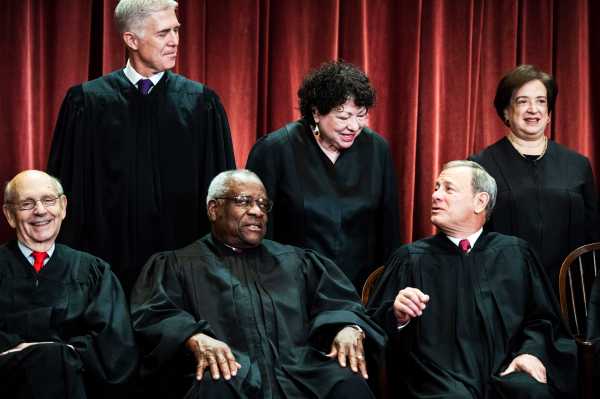
And that’s not all. In the coming months, the courts are poised to gut abortion rights, eviscerate gun control, and neuter landmark environmental laws. Federal judges have already stripped workers of their ability to assert many of their rights against their employers, and this process is likely to accelerate in the near future. Many of our voting rights lay in tatters, thanks to conservative judicial appointments, and this process is likely to accelerate as well.
When Congress has been unable to function, the executive branch has relied on existing federal laws that delegate some policymaking authority to federal agencies, in order to deal with many of the nation’s pressing needs. But with the Supreme Court poised to give judges a veto power over these agencies’ actions, the courts could in effect strike down any regulation they dislike. In a Republican-controlled judiciary, this likely means that Republican administrations will retain broad discretionary authority, but Democratic administrations will be hobbled.
And here’s the thing: We probably will not fully understand just how much power Trump’s judges will wield until after Trump leaves office. Right now, the executive branch is ideologically aligned with Trump’s judges, so those judges are less likely to object to the Trump administration’s actions than more liberal jurists. But it’s a fairly safe bet that Trump’s judges would spend an Elizabeth Warren or Joe Biden administration wreaking havoc on the new president’s agenda — and that any future Democratic president will face similar opposition.
Two reasons why Trump’s been able to stack the courts
Broadly speaking, there are two reasons why Trump has had such an outsized influence on the federal courts.
The first reason is the effective blockade Senate Majority Leader Mitch McConnell imposed on appellate court confirmations the moment Republicans took over the Senate. McConnell’s effort to block Supreme Court nominee Merrick Garland is well-known. Less well-known are the many lower court nominees who received similar treatment. Under Trump, McConnell’s turned the Senate into a machine that churns out judicial confirmations and does little else — he’s ignored literally hundreds of bills passed by the House. Under Obama, by contrast, McConnell’s Senate was the place where judicial nominations went to die.
The numbers here speak for themselves. In the final two years of the Obama presidency, when Republicans controlled the Senate, Obama successfully appointed only two federal appellate judges — and one of those judges, Kara Farnandez Stoll, was confirmed to a highly specialized court that primarily deals with patent law.
By contrast, 10 such judges were confirmed during the same period in the George W. Bush presidency — a period when Democrats controlled the Senate.

The second reason for Trump’s outsized impact on the judiciary is that, when Democrats last controlled the Senate, one especially important Democrat — Judiciary Chair Patrick Leahy (VT) — took an unusually expansive view of the rights of the minority party.
An informal tradition known as the “blue slip” sometimes gives home-state senators an exaggerated influence over who gets confirmed to federal judgeships within their states (the tradition gets its name from blue pieces of paper that home-state senators use to indicate whether they approve of a particular nominee).
Traditionally, the Senate Judiciary Committee showed some level of deference to senators who disapprove of their home-state nominees, although the level of deference given to these senators varied wildly depending on who chaired the committee and whether that committee chair was politically aligned with the incumbent president.
Leahy, who chaired the Committee for most of the Obama presidency, gave home-state senators a simply extraordinary power to block judicial nominees. Under Leahy, a single senator of either party could veto any nominee to a federal judgeship in their state (although federal appeals courts typically oversee multiple states, each individual seat on these courts is traditionally assigned to a particular state).
Before Leahy, just one committee chair imposed such a rigid blue slip rule: Sen. James Eastland (D-MS), an arch-segregationist who took over the committee not long after the Supreme Court’s school integration decision in Brown v. Board of Education (1954). A strict blue slip rule allowed Southern senators to block judges who might try to desegregate public schools.
Leahy, to be clear, is not a segregationist. He’s a reliably liberal Democrat. But he nonetheless reinstated the Eastland Rule during his tenure as chair of the Judiciary Committee.
Leahy says that he did so to protect the “rights of the minority.” And protect Republicans he did. Red-state Republicans used the power Leahy gave them to hold many judicial seats open until Obama left office. Sen. Ron Johnson (R-WI) effectively held a seat on the United States Court of Appeals for the Seventh Circuit open for eight years until Trump could fill it.
It’s tough to estimate the full impact of Leahy’s adherence to the Eastland Rule. The rule often stopped the Obama White House from nominating anyone to a vacant judgeship. According to Daniel Goldberg of the liberal Alliance for Justice, Obama “did not even make a nomination” to two seats on the Fifth Circuit because the blue slip would have doomed anyone he named; those seats were eventually filled by Trump nominees.
In other cases, the blue slip allowed Republicans to drag out negotiations over a particular vacancy until McConnell took over the Senate in 2015 and imposed a blockade on nearly all of Obama’s appellate nominees.
The Eastland Rule also weakened Obama’s hand in negotiations with Senate Republicans, and sometimes forced him to name relatively conservative judges in order to placate senators who could veto judicial nominees. Sens. Saxby Chambliss (R-GA) and Johnny Isakson (R-GA), for example, effectively held one of Obama’s Eleventh Circuit nominees hostage until Obama agreed to also name Judge Julie Carnes — a George H.W. Bush district court appointee — to a second vacancy on that same court.
Republicans did not reciprocate when they came to power. Not long after Trump took office, then-Senate Judiciary Chair Chuck Grassley (R-IA) started confirming appellate court nominees over the objection of their home-state Democratic senators. (Republicans, for what it’s worth, have largely honored the blue slip tradition when a home-state senator objects to a district court nominee.)
Leahy continued to defend the Eastland Rule well into the Trump administration. In a 2018 Senate floor speech, he touted the fact that he was “criticized by advocacy groups and even the editorial page of the New York Times” for allowing Republicans to veto Obama’s nominees, and he painted himself as a hero who “resisted such pressure.” Leahy also warned in the 2018 speech that Republicans were “failing to protect the fundamental rights of home-state senators.”
By that point, Leahy’s adherence to the Eastland Rule had denied Obama the opportunity to fill many seats forever.
Filibuster reform fundamentally changed who gets to be a judge
In 2013, in a preview of how they would later treat the Garland nomination, Senate Republicans filibustered three Obama nominees to the powerful DC Circuit in an effort to keep Democrats from gaining a majority on that court. In response, Democrats fundamentally altered the filibuster to allow lower court judges to be confirmed by a simple majority.
Under the old rules, the minority party could block a vote on any nominee, and it took 60 votes to end that filibuster. Now, only 51 votes are required to move forward to a confirmation vote.
One consequence of filibuster reform is that it enabled Democrats to fill seats that Republicans held open with a filibuster. Democrats controlled the Senate for more than a year between the November 2013 reform vote and January 2015, when Republicans took control of the Senate.
So filibuster reform prevented Republicans from holding many judicial vacancies open until Trump could fill them. It also fundamentally altered who gets to be a federal judge.
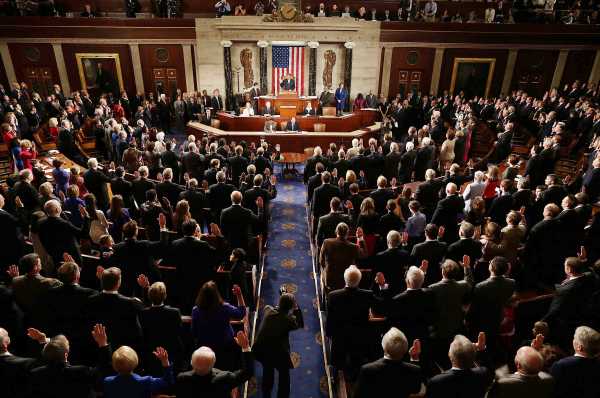
Democrats controlled the Senate for less than 14 months after filibuster reform. Yet nearly half of the former Supreme Court clerks Obama appointed to federal appellate judgeships were confirmed during this brief period — nearly as many as Obama appointed in the almost five years before filibuster reform.
Similarly, nearly three-quarters of Obama’s post-reform appointees to the federal appellate bench clerked for a court of appeals judge — as compared to less than 38 percent of Obama’s pre-reform judges. One immediate impact of filibuster reform, in other words, is that it made it far easier for nominees with elite credentials to become federal judges.
Here’s why: In the pre-reform Senate, a sterling résumé was often a liability for a judicial nominee because it flagged the nominee as a potential candidate for a future Supreme Court appointment. Both parties can tell stories of fallen martyrs, like George W. Bush nominee Miguel Estrada or Obama nominee Goodwin Liu, whose immaculate résumés painted a target on their backs. Both Estrada and Liu fell to filibusters.
By filibustering plausible Supreme Court nominees before they got on the bench in the first place, the opposition party could diminish the governing party’s pool of potential justices and make it harder for the governing party to find an ideologically reliable Supreme Court nominee when the time came.
But filibuster reform did not just improve the quality of nominees’ resumes. It also cleared the path for known ideologues to join the bench. And it appears to be altering how many sitting judges behave.
As the 2016 election drew nigh, then-10th Circuit Judge Neil Gorsuch looked like he was openly campaigning for a promotion. During this period, the Federalist Society grew increasingly obsessed with limiting the power of federal agencies to create binding regulations — an agenda that could hobble government bodies such as the Environmental Protection Agency. Gorsuch signaled his loyalty to this anti-regulatory agenda by writing gratuitous opinions laying out new limits he hoped to impose on federal agencies. In one case, Gorsuch even attached a separate concurring opinion to his own majority opinion.
As David Kaplan reports in The Most Dangerous Branch: Inside the Supreme Court’s Assault on the Constitution, one of these anti-regulatory opinions “proved decisive in clinching” the Trump White House’s decision to name Gorsuch to the Supreme Court. Gorsuch’s opinions, according to Kaplan, were “a way for Gorsuch to call attention to himself, and it worked.”
When I speak to judges, I often hear them use a derisive term to describe this kind of behavior: “auditioning.” In a world without the filibuster, ambitious judges have less to fear from the opposition party. So they have every incentive to audition for the job that they want. After all, the best way to win the prize that Gorsuch captured for himself is to catch the eye of the Federalist Society and its adherents.
The future of the judiciary favors Republicans
While Trump’s been very successful at filling the bench with brilliant Republican partisans, a Democratic president is unlikely to enjoy similar success.
A badly malapportioned Senate means that to get even a bare majority in the Senate, Democrats have to win commanding popular vote majorities — and if Democrats don’t control the Senate, Democratic nominees could face the Merrick Garland treatment. Just look at the last two years of the Obama presidency if you want to know how a Republican Senate is likely to treat Democratic judicial nominees.
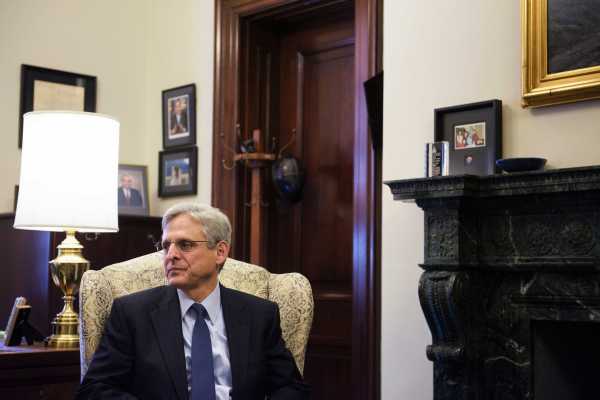
Even if Democrats do overcome the odds to capture a majority, moreover, the balance of power is likely to be held by red-state Democrats who could be vulnerable to pressure from conservative interest groups hoping to keep Democratic nominees off the bench.
In other words, it’ll be a long, long time before Democrats can undo the work Trump and the Republicans have done to turn the judiciary rightward.
In the early months of the Trump presidency, so-called “Never Trump” Republicans often directed a derisive phrase against Trump supporters: “But Gorsuch.” It was a taunt that mocked the idea that it was worth selling your soul to a manifestly unfit TV celebrity who has been accused of sexual assault and misconduct by more than a dozen women in order to keep control of the courts.
But, as conservative columnist Hugh Hewitt wrote in 2018, “this bit of childish taunting always struck me as an unknowing admission of ignorance about the role assumed by the Supreme Court in modern American governance.” Certainly, Mitch McConnell understood this role. It’s why he was willing to use any means necessary to ensure Republican control of the judiciary.
The truth is, by worshipping at the altar of Trump, Republicans haven’t simply ensured conservative dominance of one branch of government. They may have entrenched conservative governance for decades.
Sourse: vox.com






